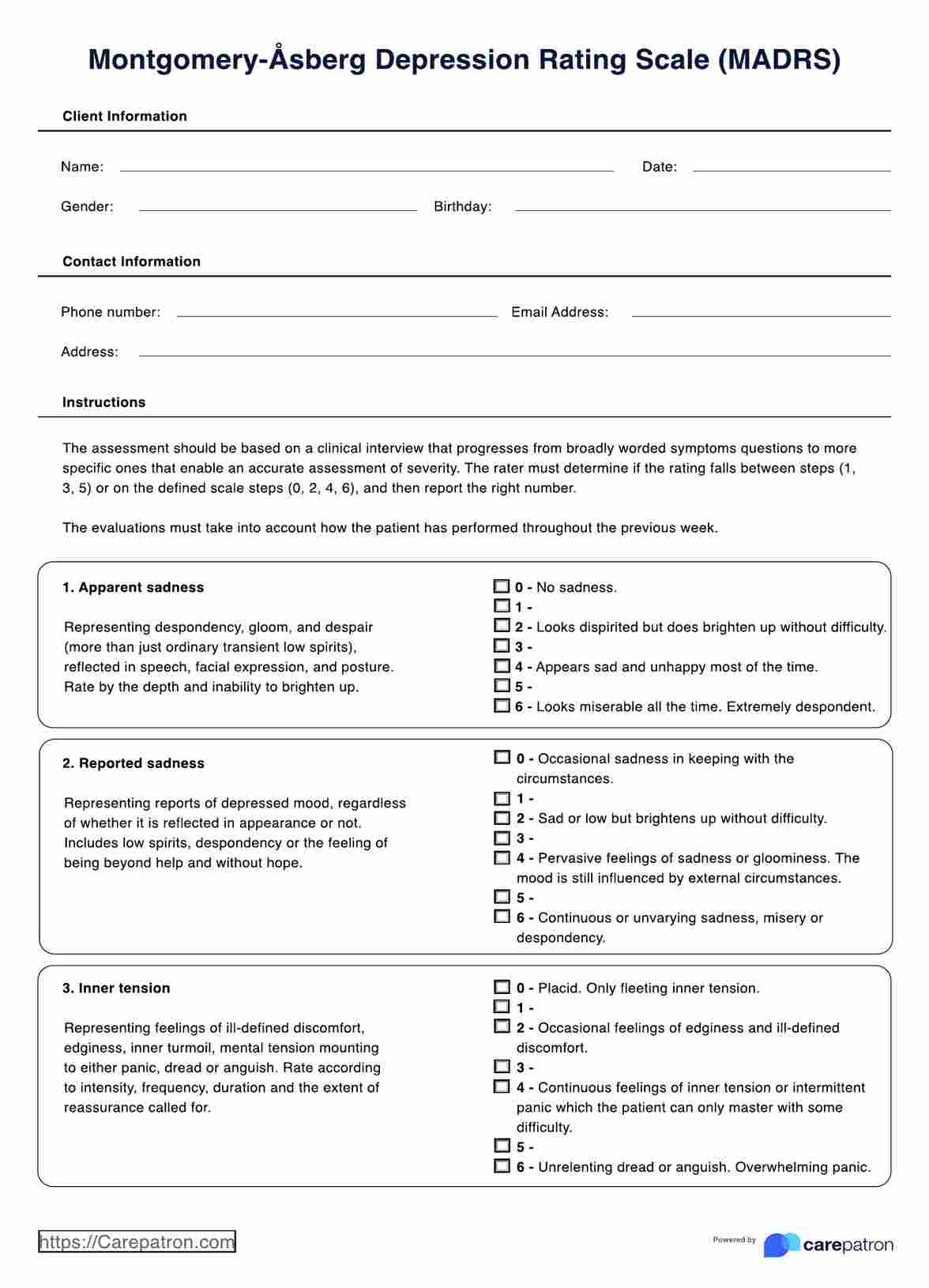The MADRS typically takes between 10-15 minutes to complete. It consists of 10 items that assess a range of depressive symptoms, including mood, feelings of guilt, insomnia, and anxiety.

Montgomery–Åsberg Depression Rating Scale
Use this Montgomery–Åsberg Depression Rating Scale to evaluate the depressive symptoms in your client and develop an effective treatment plan.
Montgomery–Åsberg Depression Rating Scale Template
Commonly asked questions
Yes, the MADRS is a well-validated and reliable tool for assessing depressive symptoms. Its psychometric properties have been extensively evaluated and it has been used in research and clinical practice for many years.
The MADRS is designed to assess depressive symptoms in adults and may not be suitable for use with children or adolescents. It is also important to note that the MADRS should not be used as the sole tool for making a diagnosis of depression.
EHR and practice management software
Get started for free
*No credit card required
Free
$0/usd
Unlimited clients
Telehealth
1GB of storage
Client portal text
Automated billing and online payments











